Comments/Ratings for a Single Item
283. General. There have been many pieces called simply "General" over the years, not even considering those in Shogi and elsewhere that have adjectives and other modifiers in their names. This version, the one that I prefer to use, was created by Guiseppi Ciccolini in 1820 for his version of chess. It slides diagonally like a Bishop, or orthogonally an even number of spaces like a lame Dabbabarider. (BnDD)
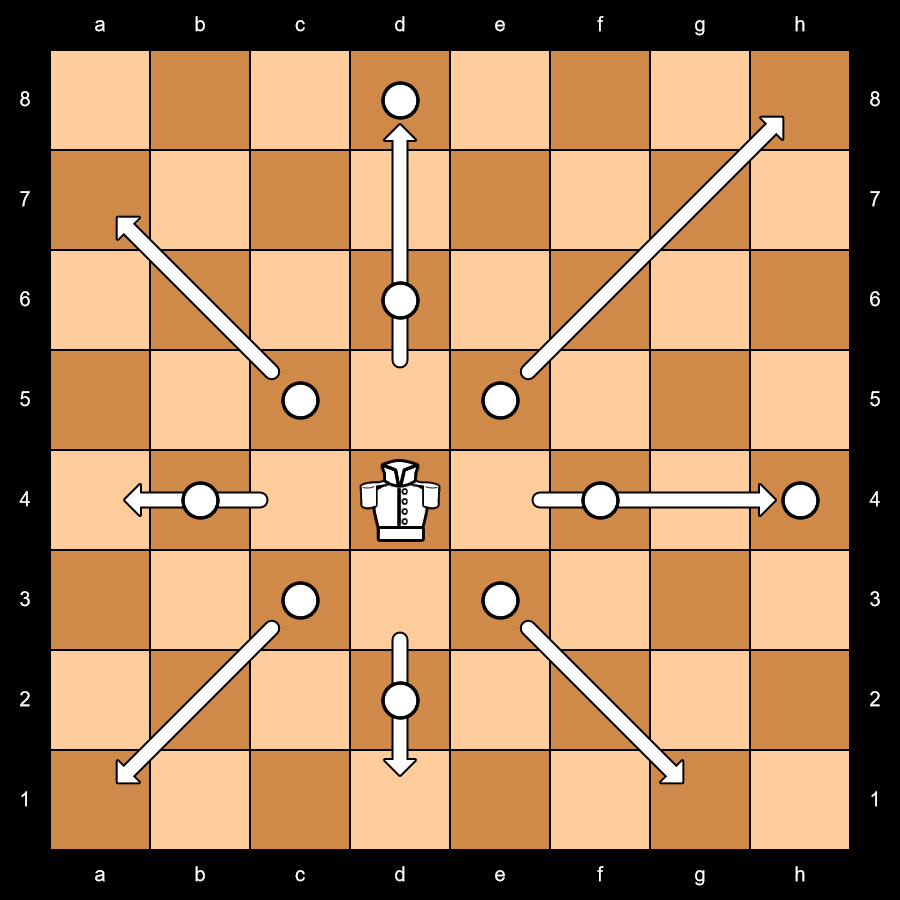
István Paulovits also created his own General in 1820, which moves as Mann or Camel (KC); I'll address that one at a later date.
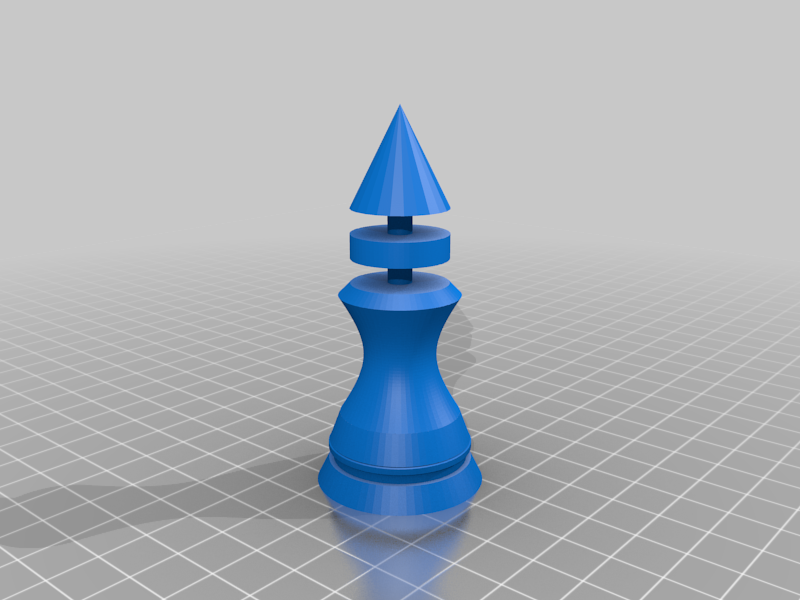
The model is based on a bit of 2D art that someone did for what a Gold or Silver General from Shogi would look like as a chess piece. Looking at it now, I think the center strut probably should be thickened (both for sturdiness and to better match the illustration).
282. Sandworm. This spawned from a recent comment on this list, like a throwaway line in a movie that becomes a classic.* This is inspired by the creatures from well-known desert planets in the Star Wars and Dune franchises (Tattooine and Arrakis, respectively), but it's not the full-sized version (which probably would be something to go into a four-square space, though with rather similar moves). This can be thought of as a "Juvenile Sandworm."
A main feature of the fictional sandworms is that they burrow underground, so as a piece the Sandworm simulates that by jumping others. At its basic, it slides in any radial direction, like a Queen. In the interest of game balance, I limit that to two pieces that it can burrow under, though in games with particularly large armies that may increase. If there are no pieces to burrow under and the Sandworm moves no more than 4 spaces to capture, it may continue to capture another piece in the next square. ((paf)2QcyafQ4)
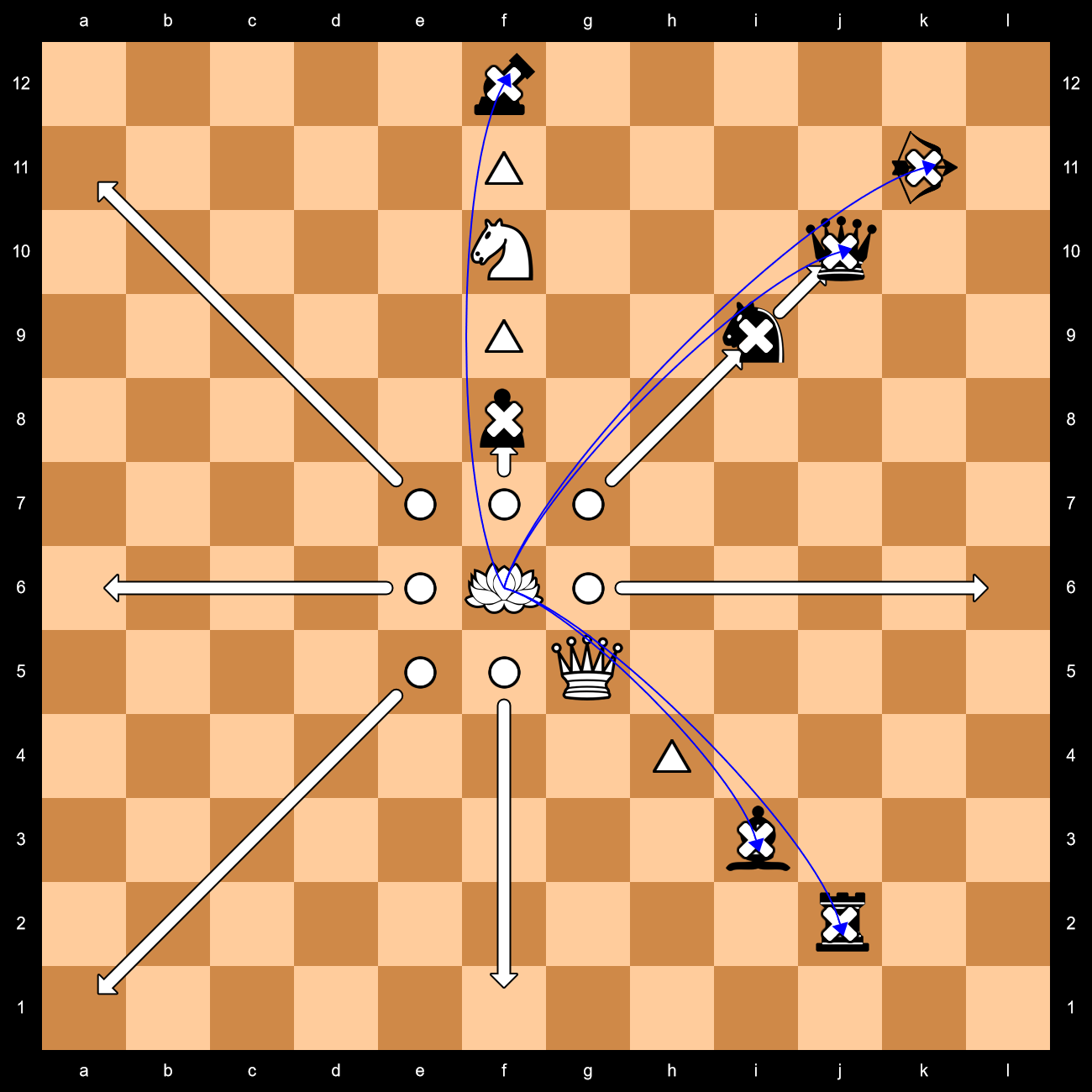
In this (hopefully not overly confusing) diagram, the White Sandworm is able to capture any of the Black pices on the board. The only two that it can capture in a single move, however, are the Knight (i9) and Queen (j10), since the Knight is only 3 spaces away, the Queen is in the next adjacent space, and there are no intervening obstacles.
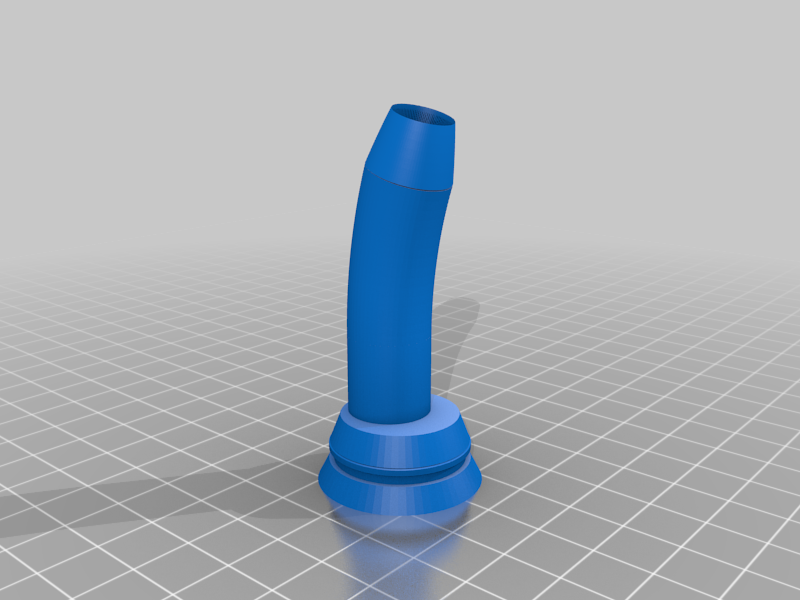
I probably could've posted this much earlier, but (aside from the previously-mentioned issues at Thingiverse) the shape kept coming out so that Thingiverse's sample-graphic (above) made it look like... well, something that probably shouldn't be shown on this site. It still kinda does, but I think it reads OK. (I might see about making the teeth large enough to be visible in the image.)
*It's even happened to my own comments, at the Super-Team Family: the Lost Issues blog. I was only kidding when I mentioned Snow White and the Seven Soldiers of Victory -- which became my first idea to be published there -- and my remark about Bugs Bunny vs. Doctor Doom was supposed to be an example of things we probably wouldn't see done!
An army with your pieces. What'd you call this army?
If it's a CwDA set, probably "Mad Movers."
By the way, Chinoise Rose in problemist language is called Rao.
I should've suspected that it would be something that rhymed with the others.
An army with your pieces. What'd you call this army?
By the way, Chinoise Rose in problemist language is called Rao.
I still have Astra (Rosetta) on your queue, but also I’ve recently created Astromech (even squares diagonally or odd ones orthogonally, AA[W?DD]). Try to guess who is Astromech)
The issues that the Tinkercad website is having recently may lead me to take a break after this weekend. Since the problem mainly affects new uploads, I may continue for a short while, but otherwise I'll just wait for the problem to be fixed.
I had already planned on only going to #366 (I'm running out of possible pieces to post), posting only occasionally afterward for extensions of sets, missed rotary counterparts, special requests, new discoveries, and so forth. I also had planned, if I hadn't done this already by then, to take the time to create an index of sorts that I could post as an article.
281. Mei (Chinese Rose / Rao). If a Nao is a Chinese Nightrider, then could there be a Chinese Rose? Well, of course there could! Like the Nao, the Mei (the best translation into Chinese for the word "rose" that I could find*) moves without capture normally, but must jump over a hurdle to capture. It's just that the Mei moves like a Rose. (mqNcqpN)
I don't think a move diagram is needed in this case, since most of us here knows how the Rose moves. I can vouch that the above XBetza does work; I tried it out in the XBetza Sandbox, and it behaves just as intended.
As I was informed in a later reply, this piece is called a Rao by chess problemists.

Creating this led me to discover some serious design flaws with my original Rose piece, which I've now corrected on my own system and will upload some time soon (Thingiverse is still having problems.)
*I have no doubt -- and, in fact, much hope -- that someone well-versed in the language will correct me if I got it wrong.
Thanks for the catch. I only just recently realized my error there. I'll go fix that, both here and in my games where it appears, today and tomorrow.
Demiurge Turtle is mScK4 since it's based on Mock Turtle from Jupiter.
280. Yak. No, this isn't another Tifinagh piece*; this is named for the animal.
It simply occurred to me recently that particularly large boards could use a piece that's the equivalent of a Buffalo (NCZ), extending one space further. I considered naming it for a pouncing predator, but besides most such creatures being already taken, it didn't seem to fit the established pattern. This piece combines the leaps of the Knight (horse), Camel, Zebra, Giraffe, and Antelope, and also includes many compound ungulates (Gnu, Bison, Okapi, Buffalo, and so forth), so an ungulate seemed fitting. After a little bit of research, the animal that stood out was the Yak. (NCZFXNY)
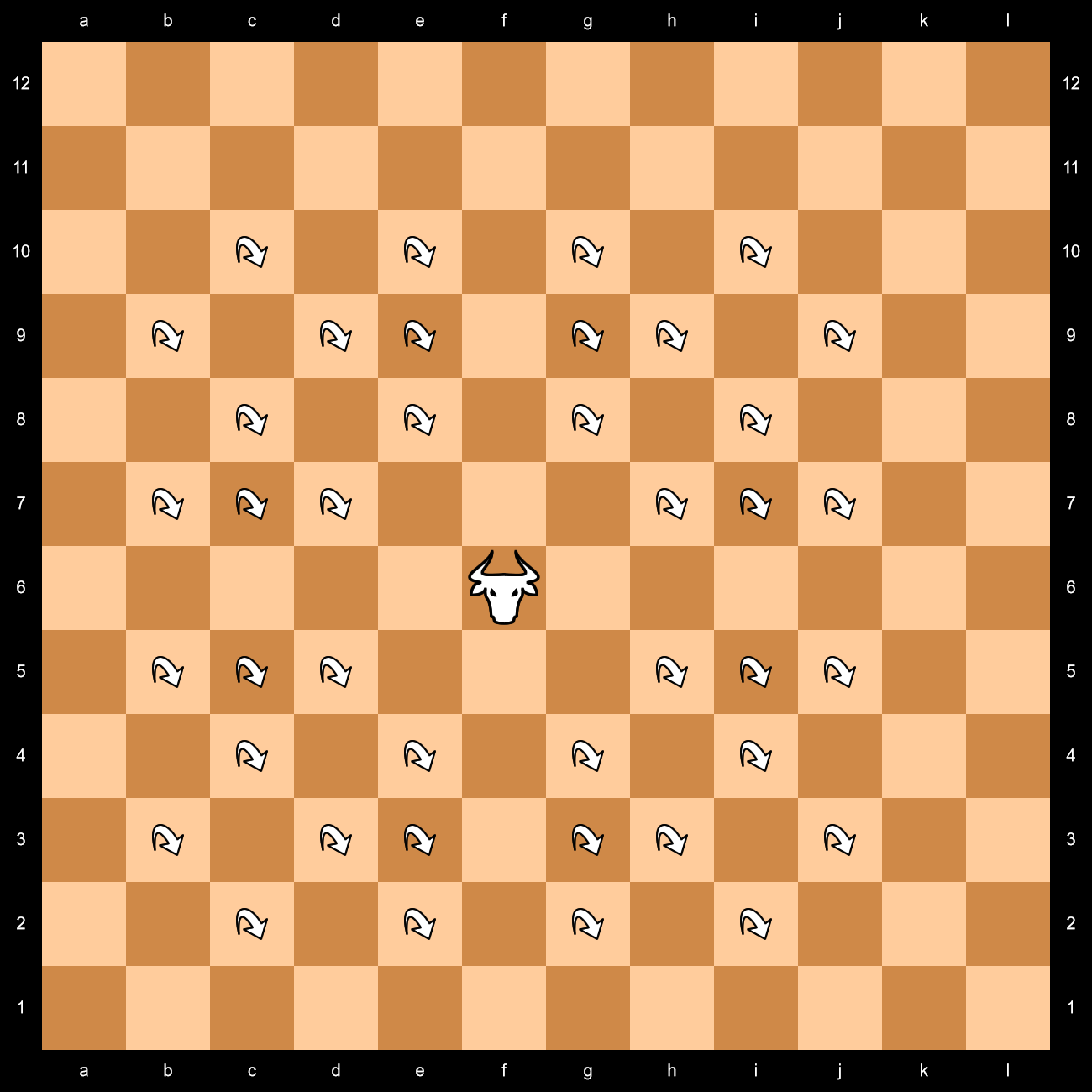
I deliberately excluded the (4,2) leap of the Hare/Stag/Lancer since it's just an extension of the Knight move; pieces that add the DY or N2 can be considered separately. As it is already, it can be a formidable and versatile piece.

*The two forms of the letter yak are ⴽ and (in Tuareg) ⴾ, neither of which (in my opinion) make particularly good chess pieces -- at least, not without some sort of mirror image.
That's one take, though the larger sandworm like that is one that I'd want to represent with a giant piece (one that takes up more than one square), something that isn't implemented in XBetza, and probably -- probably -- never will be. In any event, removing adjacent pieces upon capture of a central one will probably have to wait until HG can program in the semicolons for bracket notation.
I have something a little different in mind for something more man-sized. I'm not sure yet whether it'll be today's PotD, or tomorrow's...
@Bob: Yes. I imagine a piece that can land on a friendly piece and immediatly kills (removes) that piece and all pieces in the 8 squares around, friend or enemy.
It is possible to capture an enemy sandworm. It is possible to move to an adjacent square to a sandworm, friend or enemy. The sandworm capture adjacent pieces only when it moves.
Has anyone besides me even used this piece?
Now that I have a name for it, I intend to. In fact, I've already added it to the piece list for my all-Dragon game.
Has anyone besides me even used this piece? It seems strange to say it's generally known as anything. A less overused alternative could be Salamander, although that does seem to be used in Typhoon for KmyadabuQ4. Striped Dragon sounds like a decent solution.
A Sandworm might make an interesting piece.
It reminds me of the sandworm of Dune. Well, if it was a sandworm it would have a larger diameter, which a could be a good idea because in reality I would fear this piece breaks too easily.
279. Striped Dragon. I was trying a couple of months ago to figure out a good counterpart for the Tiger, but all anyone could offer as a name was Dragon, which I'm reluctant to use because there are so many Dragons running around the site (I even have some work done on a variant featuring every one I could find). So, I waited until something presented itself; and finally, a few days ago, it occurred to me that if it's related to the Tiger, maybe this Dragon is striped. So, while it's generally known as just Dragon, I decided to call it Striped Dragon.
The move is simple: the Striped Dragon makes a (2,3) leap like a Zebra, then may slide from there orthogonally outward like a Rook. ([Z?R])
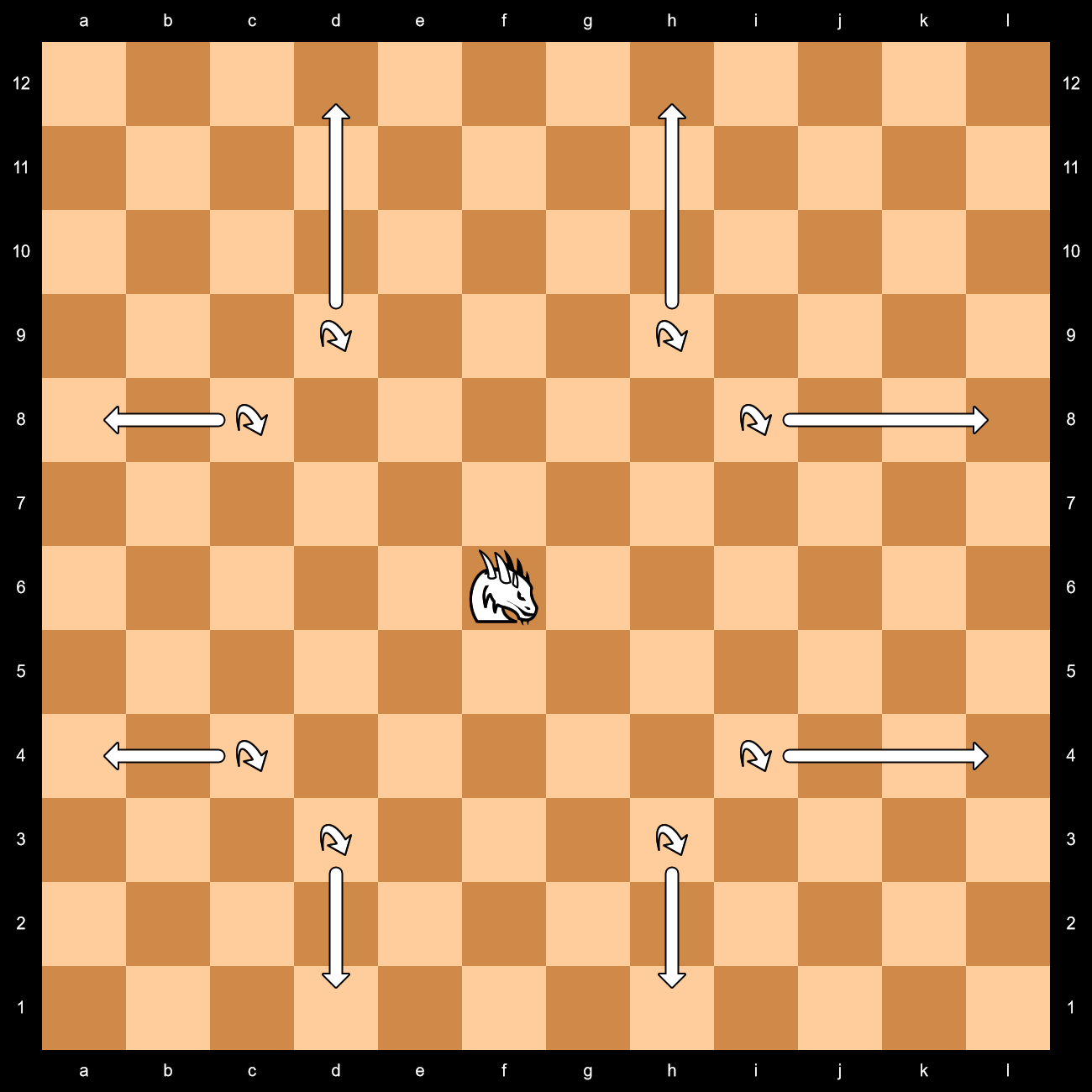
And so now we have a pair.

Despite the lack of wings, I think this piece looks quite draconian.
I actually do have the Señora (and Saltador) on my Thingiverse page (though I didn't think to do the Señor; thanks for reminding me about that link, HaruNY!). I'll probably post them all separately at some later date, as a follow-up.
As to the contrast with Chinese pieces, I would have done that but I couldn't remember which pieces the Argentinian ones contrasted with.
PS: I like my interpretation of Loco better. But then again, I would. :þ :)
Maybe he saved Señora & Señor for next week.
I like these two 3D designs. You could do a similar one for the Señora.
You could have mentionned that these pieces behave as the opposite of the so-called Chinese pieces, xiangqi's Cannon (a.k.a. Pao), Vao and Leo.
The names Faro, Loco, Señora are smart. A semaphor (Faro) is a kind of tower (Rook is Torre/Tour in Spanish/French), Loco is the Spanish translation of Fou in French which is the name for the Bishop in chess, and obviously Señora, lady in English is related to Dama/Dame in Spanish/French, meaning lady in English and the name of the Queen in chess.
Good post.
And in case anyone's interested, I have the lineup figured out for Clue Chess. Some of these pictures need a bit of reworking, I'll admit, but in general this is what you'll see on the character cards:








I acknowledge that it's hard to tell what weapon some of the characters are holding (or associated with in the picture) or what room they're in, so that'll need a bit of work. But this is a good start.
Tinkercad continues to have its upload problems, so it took until today to get the weekend's pair.
277. Faro. and 278. Loco. Also called the Argentinian Rook and Argentinian Bishop, these two pieces (along with the corresponding Knight and Queen -- Saltador and Señora, respectively) were invented in 2016 by Manfred Rittirsch for use in fairy chess problems; they've rarely been seen in an actual game until this year.
Argentinian pieces capture with a normal move, but must pass a hurdle in order to move without capturing. The distance before and after the hurdle can be anything, as long as the piece follow a straight line and jump exactly one hurdle.
As suggested by their alternate names, the Faro moves orthogonally (cRmpR), while the Loco moves diagonally (cBmpB).
The names, translated from Spanish, mean lighthouse and crazy person.
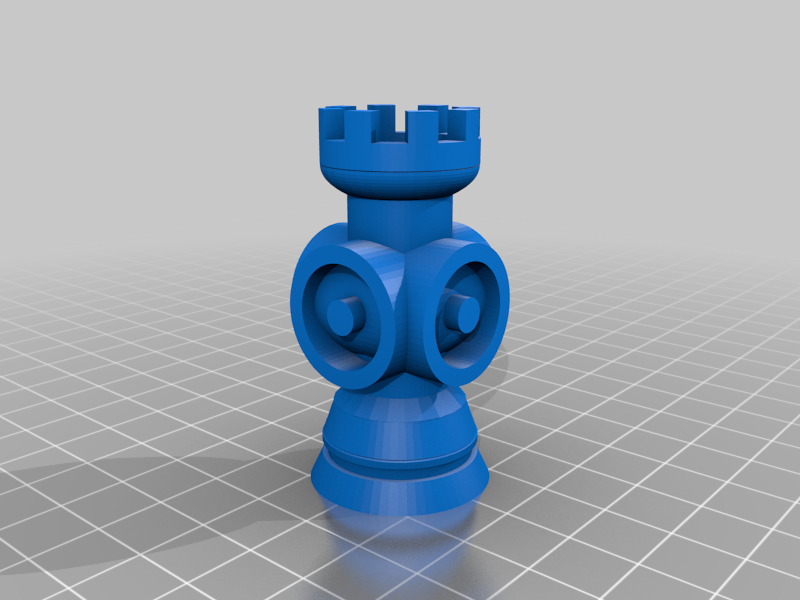
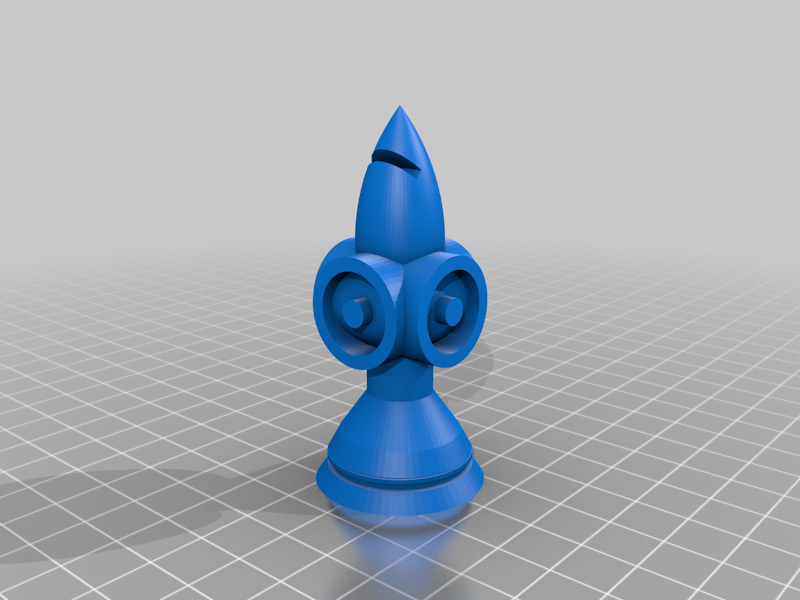
The added-on part of the dot inside a circle is intended to represent the Cockade of Argentina, one of the country's most recognizable national symbols.* My apologies to those in North America (and elsewhere) who associate that image with the Target department store chain.
(I'm thinking that maybe I should rework these pieces, with the circles a smaller diameter.)
The Señora, of course, compounds these two. (The Saltador moves like a normal Knight, but must have a piece in one of the two intervening spaces to move without capturing.) More Argentinian pieces could be extrapolated from all these, including Archbishop, Chancellor, Nightrider, and others.
*The most recognizable is the Sun of May, which consists of a sun with a face and 32 rays extended, alternating between straight and undulated, as seen in the center of the country's flag. While a beautiful and singular icon, it's a bit too complex for this context.
276. Grand Vizier. This is yet another intereseting piece from Robert Shimmin's game Scheherazade. It can step to any adjacent space, or leap (1,3) or (2,2). (KAC)

I rather like this piece for slightly-large boards such as the 12x12 one shown here.

This is yet another model that I made after studying historical pictures. I may need to accentuate the sash more, but on the whole I think it came out OK.
Since it's never appeared in any published version of Clue, no, I haven't.
25 comments displayed
Permalink to the exact comments currently displayed.

I do have my issue at Thingiverse reported, and the staff moderator has been able to duplicate my problem; so while I'm waiting for the dev staff to fix it, I might as well post a bit of a something to keep the PotD slots filled.
284-289. The Orthodox Pieces (King, Queen, Bishop, Knight, Rook, Pawn). While they're not really fairy chess pieces on their own, they do appear in a majority of chess variants, and I do have models of them in a single set. I don't think I need to identify any of them or discuss their moves.
Now, however long the team at Thingiverse takes, at least I won't (necessarily) have to worry about it before Friday. :)